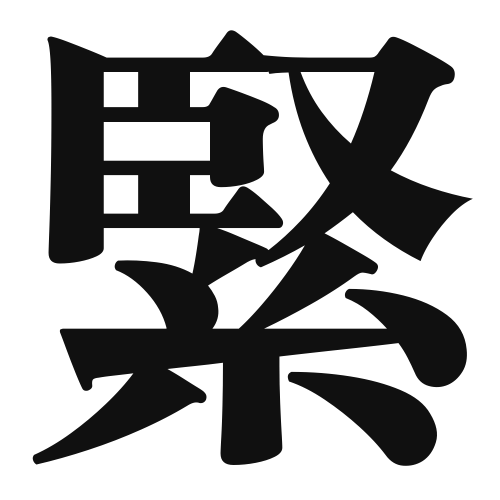1. Overview of Meaning
The kanji “緊” (kin) generally means “tight,” “tense,” or “urgent.” It conveys a sense of pressure or seriousness in various contexts.
2. Formation and Radical
Formation of the Kanji: The kanji “緊” is a phonetic compound (形声文字), which combines the radical for “thread” (糸) with a phonetic component that suggests its pronunciation.
Radical: The radical of “緊” is 糸 (ito), which relates to threads or strings, indicating a connection to tension or tightness.
3. Examples of Usage
Common Words and Phrases: Some frequently used words that include “緊” are 緊張 (kinchou – tension), 緊急 (kinkyuu – emergency), and 緊密 (kinmitsu – close or tight).
Example Sentences in Daily Conversation:
- 試験前はいつも緊張します。(Shiken mae wa itsumo kinchou shimasu.) – I always feel tense before exams.
- 緊急の用事があるので、すぐに行かなければなりません。(Kinkyuu no youji ga aru node, sugu ni ikanakereba narimasen.) – I have an urgent matter to attend to, so I must go immediately.
4. Synonyms and Antonyms
Similar Kanji: A similar kanji is “緊迫” (kinpaku), which means “tension” or “pressure,” but it often refers to a more intense or critical situation.
Opposite Kanji: An antonym is “緩” (kan), which means “loose” or “relaxed,” indicating a lack of tension or pressure.
5. Cultural and Historical Background
Relation to Japanese Culture: The concept of “緊” is often associated with the importance of maintaining composure and seriousness in various aspects of Japanese culture, such as business and social interactions.
Proverbs and Idioms: One common saying is “緊張感を持つ” (kinchoukan o motsu), which means “to have a sense of tension,” emphasizing the need to stay alert and focused in challenging situations.
